Entry Database : PDB / ID : 2k61Title Solution structure of CaM complexed to DAPk peptide Calmodulin Keywords / / / / Function / homology Function Domain/homology Component
/ / / / / / / / / / / / / / / / / / / / / / / / / / / / / / / / / / / / / / / / / / / / / / / / / / / / / / / / / / / / / / / / / / / / / / / / / / / / / / / / / / / / / / / / / / / / / / / / / / / / / / / / / / / / / / / / / / / / / / / / / / / / / / / / Biological species Homo sapiens (human)Method / Authors Bertini, I. / Luchinat, C. / Parigi, G. / Yuan, J. Journal : J.Am.Chem.Soc. / Year : 2009Title : Accurate solution structures of proteins from X-ray data and a minimal set of NMR data: calmodulin-peptide complexes as examples.Authors : Bertini, I. / Kursula, P. / Luchinat, C. / Parigi, G. / Vahokoski, J. / Wilmanns, M. / Yuan, J. History Deposition Jul 2, 2008 Deposition site / Processing site Revision 1.0 May 5, 2009 Provider / Type Revision 1.1 Jul 13, 2011 Group Revision 1.2 Jun 8, 2016 Group Revision 1.3 Oct 20, 2021 Group / Database references / Derived calculationsCategory database_2 / pdbx_nmr_software ... database_2 / pdbx_nmr_software / pdbx_nmr_spectrometer / pdbx_struct_conn_angle / struct_conn / struct_ref_seq_dif / struct_site Item _database_2.pdbx_DOI / _database_2.pdbx_database_accession ... _database_2.pdbx_DOI / _database_2.pdbx_database_accession / _pdbx_nmr_software.name / _pdbx_nmr_spectrometer.model / _pdbx_struct_conn_angle.ptnr1_auth_comp_id / _pdbx_struct_conn_angle.ptnr1_auth_seq_id / _pdbx_struct_conn_angle.ptnr1_label_atom_id / _pdbx_struct_conn_angle.ptnr1_label_comp_id / _pdbx_struct_conn_angle.ptnr1_label_seq_id / _pdbx_struct_conn_angle.ptnr2_auth_comp_id / _pdbx_struct_conn_angle.ptnr2_auth_seq_id / _pdbx_struct_conn_angle.ptnr2_label_asym_id / _pdbx_struct_conn_angle.ptnr2_label_atom_id / _pdbx_struct_conn_angle.ptnr2_label_comp_id / _pdbx_struct_conn_angle.ptnr3_auth_comp_id / _pdbx_struct_conn_angle.ptnr3_auth_seq_id / _pdbx_struct_conn_angle.ptnr3_label_atom_id / _pdbx_struct_conn_angle.ptnr3_label_comp_id / _pdbx_struct_conn_angle.ptnr3_label_seq_id / _pdbx_struct_conn_angle.value / _struct_conn.pdbx_dist_value / _struct_conn.ptnr1_auth_comp_id / _struct_conn.ptnr1_auth_seq_id / _struct_conn.ptnr1_label_atom_id / _struct_conn.ptnr1_label_comp_id / _struct_conn.ptnr1_label_seq_id / _struct_conn.ptnr2_auth_comp_id / _struct_conn.ptnr2_auth_seq_id / _struct_conn.ptnr2_label_asym_id / _struct_conn.ptnr2_label_atom_id / _struct_conn.ptnr2_label_comp_id / _struct_ref_seq_dif.details / _struct_site.pdbx_auth_asym_id / _struct_site.pdbx_auth_comp_id / _struct_site.pdbx_auth_seq_id Revision 1.4 May 8, 2024 Group / Database references / Category / chem_comp_bond / database_2 / Item
Show all Show less
 Open data
Open data Basic information
Basic information Components
Components Keywords
Keywords Function and homology information
Function and homology information Homo sapiens (human)
Homo sapiens (human) Authors
Authors Citation
Citation Journal: J.Am.Chem.Soc. / Year: 2009
Journal: J.Am.Chem.Soc. / Year: 2009 Structure visualization
Structure visualization Molmil
Molmil Jmol/JSmol
Jmol/JSmol Downloads & links
Downloads & links Download
Download 2k61.cif.gz
2k61.cif.gz PDBx/mmCIF format
PDBx/mmCIF format pdb2k61.ent.gz
pdb2k61.ent.gz PDB format
PDB format 2k61.json.gz
2k61.json.gz PDBx/mmJSON format
PDBx/mmJSON format Other downloads
Other downloads 2k61_validation.pdf.gz
2k61_validation.pdf.gz wwPDB validaton report
wwPDB validaton report 2k61_full_validation.pdf.gz
2k61_full_validation.pdf.gz 2k61_validation.xml.gz
2k61_validation.xml.gz 2k61_validation.cif.gz
2k61_validation.cif.gz https://data.pdbj.org/pub/pdb/validation_reports/k6/2k61
https://data.pdbj.org/pub/pdb/validation_reports/k6/2k61 ftp://data.pdbj.org/pub/pdb/validation_reports/k6/2k61
ftp://data.pdbj.org/pub/pdb/validation_reports/k6/2k61 Links
Links Assembly
Assembly
 Components
Components Homo sapiens (human)
Homo sapiens (human)
 Sample preparation
Sample preparation Processing
Processing Movie
Movie Controller
Controller



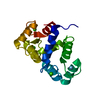
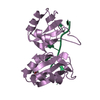
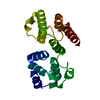
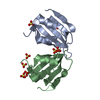
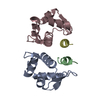
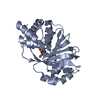


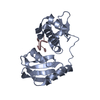
 PDBj
PDBj
























 HSQC
HSQC